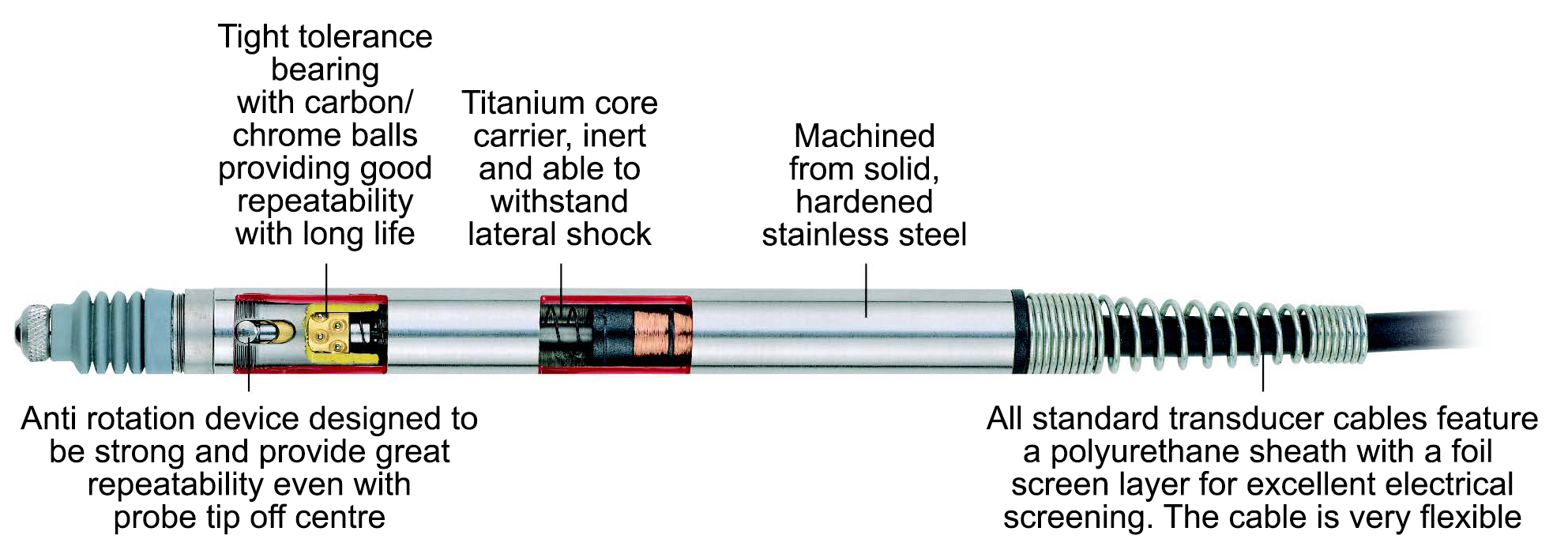Gauging Probe - Robust Design - Finest Quality

Contact gauge Probes very often provide the only cost effective solution for a wide range of measuring and positioning applications in diverse industries.
As with all mechanical transducers, life is of paramount importance. It is not too difficult to produce a gauge probe that works well when new, but considerably more difficult to produce a probe that maintains its performance throughout a long working life.
It requires close attention to detail in design and manufacture as well as investment in state of the art machines to produce precision bearings which are the heart of a gauge probe.
Solartron Metrology has complete control over all aspects of the design and manufacture of its sensors. Whether the application is in the laboratory or in manufacturing our extensive range of transducers will most likely provide a solution. If nothing seems to meet your need we will always consider customised products.
|